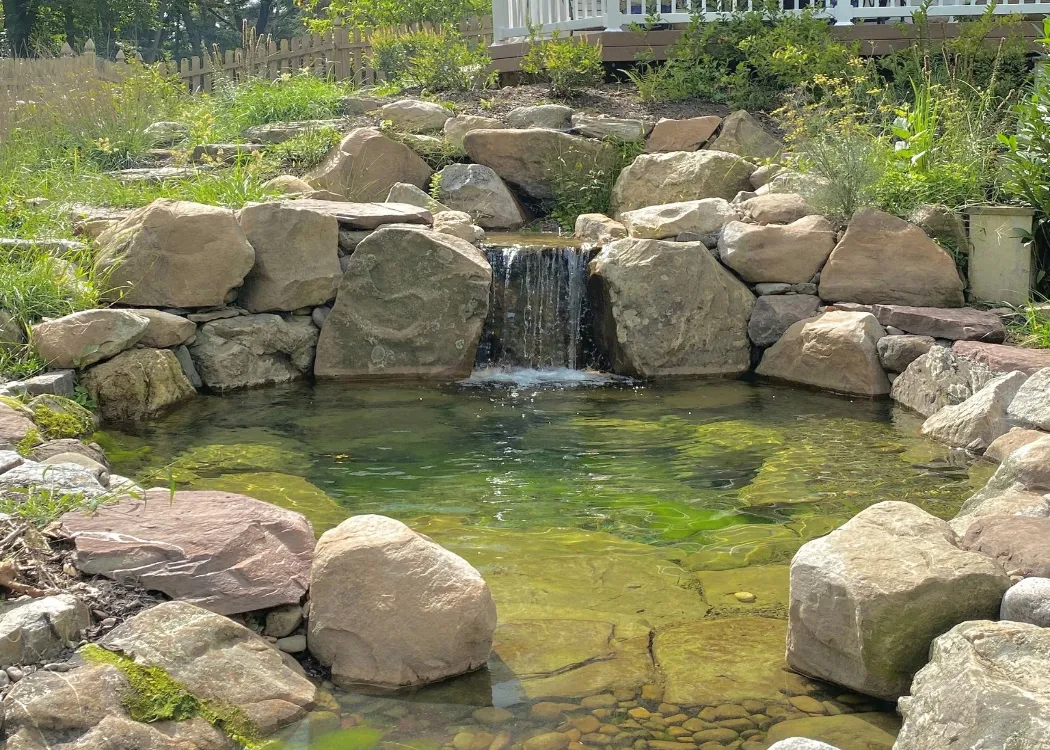A beautifully maintained pond enhances your garden, creating a peaceful retreat that supports vibrant aquatic life. Keeping a pond pristine requires a consistent care routine to prevent common issues like murky water and algae overgrowth. Here’s an in-depth guide on essential maintenance practices to ensure your pond remains clear and thriving year-round.
1. Regular Pond Cleaning
Routine cleaning is the foundation of effective pond maintenance. Over time, leaves, sludge, and other debris accumulate at the bottom and along the edges of the pond, which can cause blockages, encourage algae growth, and affect water quality. Removing this buildup is crucial to prevent water clarity issues and maintain a healthy ecosystem.
A basic pond clean-up involves skimming the surface to remove leaves and floating debris and occasionally vacuuming the pond’s bottom to clear out accumulated sludge. Consider using a Pond Vacuum for a deep, efficient clean. This tool can be especially useful in larger ponds where manual cleaning is challenging. For a more thorough seasonal clean, professional Pond Cleaning Services are available to take on the heavier lifting, helping maintain a clear and fresh pond environment.
2. Invest in High-Quality Filtration and Circulation Systems
Effective filtration is key to maintaining clear, healthy water. A quality pond filter will help trap and remove impurities, ensuring water clarity and preventing issues like algae buildup. Choosing the right filter depends on the pond’s size and fish population. Options like Drum Filters are highly efficient, automatically removing waste to reduce maintenance requirements.
Equally important is circulation, which helps distribute oxygen and nutrients throughout the pond. Proper aeration is essential, particularly in larger ponds or ponds with koi fish, as it prevents stagnant zones and supports beneficial bacteria that break down waste. Consider adding an Air Pump for optimal water movement, promoting a healthier ecosystem.
3. Seasonal Pond Care
Pond maintenance is a year-round task, and each season brings specific care requirements to keep your pond thriving. During autumn, falling leaves can quickly clog filters and reduce water quality, so netting the pond and frequent skimming are important. In winter, ensure the pond does not freeze over entirely, as ice blocks oxygen exchange, which is essential for fish and plants.
Spring is the perfect time for a deep clean to remove any lingering sludge and prepare the pond for warmer months, while summer requires close attention to water levels and algae control. By following a Seasonal Pond Care Guide, you can effectively manage these seasonal changes, ensuring your pond stays balanced and beautiful all year.
4. Manage Algae Growth
Algae is a common concern in pond maintenance, especially during the summer when warm temperatures promote growth. While some algae are natural and beneficial, an overabundance can turn the water green, block sunlight, and deplete oxygen levels, creating an unhealthy environment.
Regularly cleaning the pond, managing nutrient levels, and using an appropriate filter are effective strategies for controlling algae. For persistent algae problems, OASE Lake Therapy Treatments can target and reduce algae growth without harming aquatic plants or fish. Controlling algae not only improves water quality but also enhances the pond’s appearance, keeping it a focal point in your garden.
5. Test Water Quality Regularly
Water quality is one of the most critical aspects of pond health. Regularly testing parameters like pH, ammonia, nitrite, and nitrate levels will help you detect imbalances before they become harmful. For instance, high ammonia levels can stress fish, while pH fluctuations affect the pond’s ecosystem.
Consider reading our guide on Ammonia and Nitrite Management for in-depth insights on keeping these levels balanced. Testing kits make it easy to monitor these values, allowing you to make adjustments by changing water, adding treatments, or upgrading filtration systems.
6. Aquatic Plant and Fish Care
Aquatic plants are beneficial for a pond’s ecosystem, as they absorb excess nutrients, provide shelter for fish, and prevent algae growth. However, overgrown plants can overcrowd the pond, affecting water circulation and clarity. Regular pruning keeps these plants manageable, ensuring they continue to contribute positively.
Fish also play a role in maintaining a balanced pond, but they require adequate care and space. Overcrowding or overfeeding fish can result in poor water quality and increased algae growth. Check out our Best Plants for Koi Pond Guide for plant recommendations that enhance aesthetics and natural filtration in koi ponds.
7. Plan for Emergencies and Unexpected Issues
Sometimes, even the best-maintained ponds can face unexpected challenges, such as equipment failure or sudden water quality changes. Keeping spare parts for pumps and filters can help prevent prolonged downtime. A trusted professional service is also beneficial in case of emergencies, offering peace of mind that issues will be resolved swiftly.
